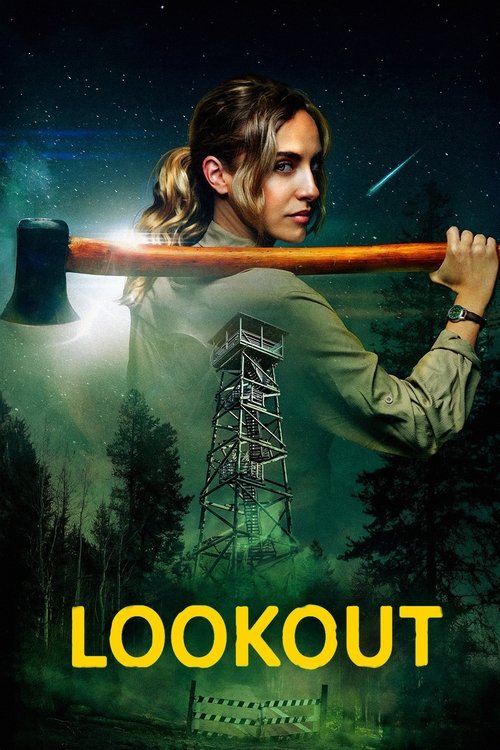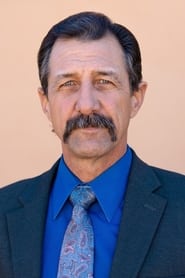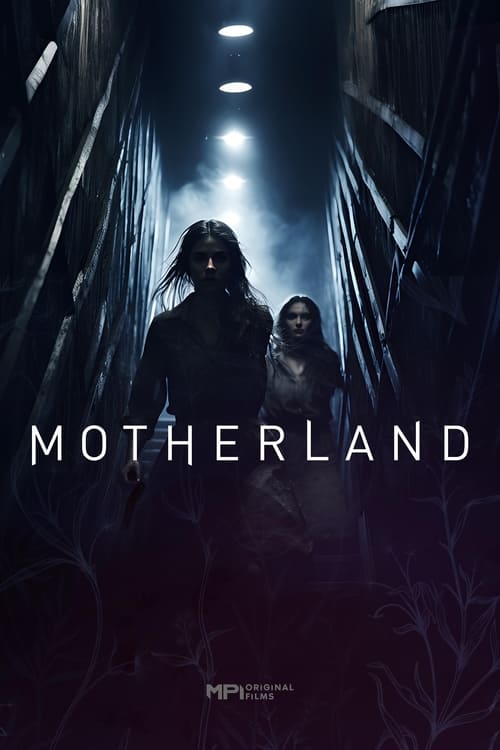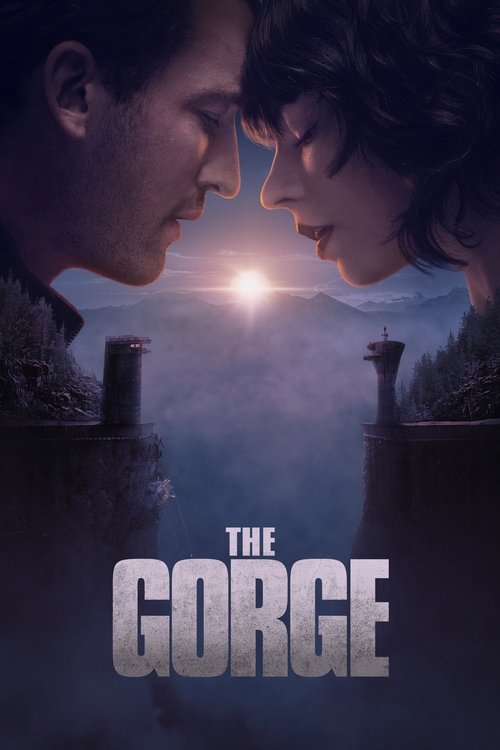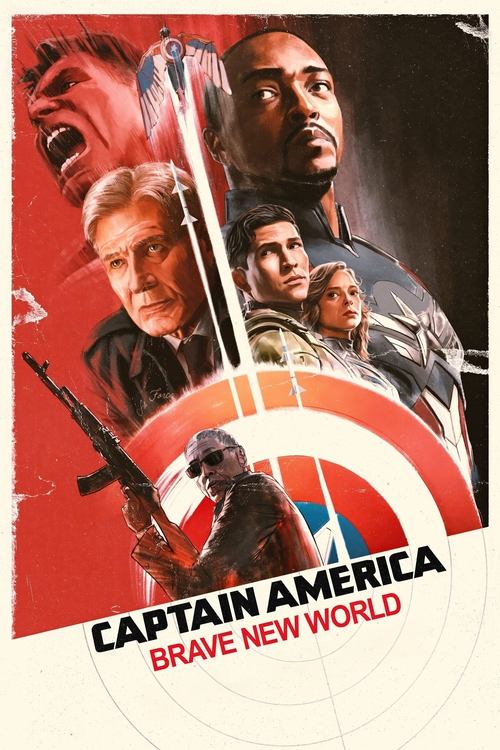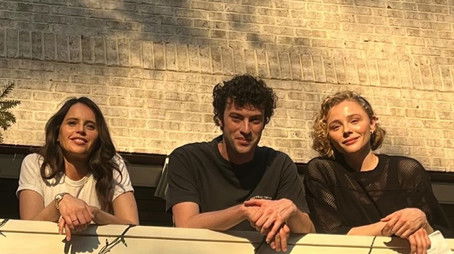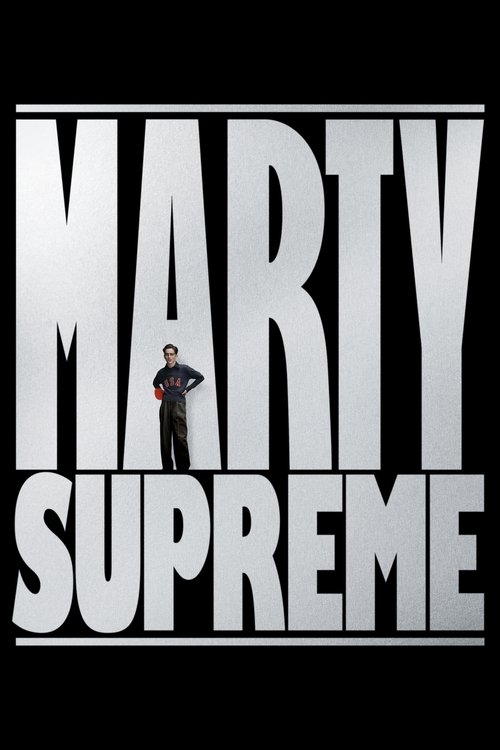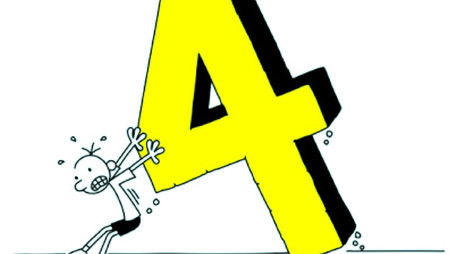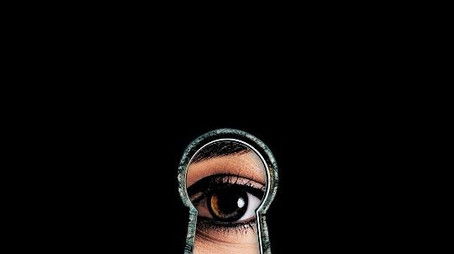
Ask Your Own Question
What is the plot?
Chris is driving at night with his headlights deliberately off when his car slams into a stalled combine on a rural road. Two of the other young people in the vehicle are killed instantly by the impact; Chris and his girlfriend Kelly survive the collision, but Kelly loses a leg. The crash destroys large stretches of Chris's short-term memory and leaves him with pronounced anger issues. He cannot form new memories reliably and struggles to carry over information from one day to the next; doctors diagnose him with anterograde amnesia. In the aftermath, his wealthy parents provide financial support but do not become emotionally involved in fixing his life. A blunt case manager forces him into rehabilitation classes that teach him basic routines and sequencing strategies to compensate for his inability to remember, and Chris keeps a small pocket notebook full of written instructions and reminders that he consults constantly. He moves into a modest apartment with Lewis, a congenial blind man who becomes Chris's emotional anchor, and at night Chris cleans a small-town bank to earn a living.
Four years after the crash, Chris is still trying to build a life around strict routines. He attends classes where instructors ask him to break tasks into tiny, repeatable steps: making coffee, taking the bus, locking a door. He writes notes to himself and numbers the sequence of actions so that he can execute them later without relying on memory. Outside of Lewis, his main social contact is Sherman County Deputy Ted, a local sheriff's deputy who checks in on him regularly and treats him with a kind of blunt, steady compassion. At work he mops, polishes counters and empties trash in the small bank. Chris repeatedly asks Mr. Tuttle, the bank manager, to be considered for a teller position; the manager, uneasy about Chris's limitations and erratic past, keeps deflecting and refuses to hire him behind the counter.
A group of small-time criminals begins planning a robbery of that very bank. Their leader is Gary, a man who grew up in the same town and remembers Chris from their high school days. Gary harbors resentment toward Chris for his old popularity and the wealth his family enjoys. To get close to him, Gary befriends Chris and sends an attractive young woman named Luvlee Lemons to weave herself into Chris's life. Luvlee feigns interest and seduction; she uses sexual attention and casual conversation to lower Chris's suspicion and to learn his routines. Gary and the gang taunt Chris about the crash and the way his life stopped afterward, using insults and mockery to push him into feeling worthless and cut off from the community.
Chris, brittle from frustration over his lack of independence and stung by the repeated refusals from Mr. Tuttle and by reminders of what he lost, lets himself be drawn into their company. He wants work, dignity and a role to play, and the gang's attention feels like acceptance. He reluctantly goes along with some of Gary's schemes, but that complicates his relationship with Lewis. One night the tension between Chris and his roommate explodes into a heated argument about responsibility and the meaning of help; Lewis confronts Chris over the choices he is making and the company he keeps. After Lewis speaks bluntly about trust and loyalty, Chris paces and rereads the notes in his notebook; Luvlee, seeing the strain she has contributed to, breaks off the relationship and moves away from town.
On the night the robbery is planned, Mr. Tuttle has a change of heart. He tells Chris he will finally consider him for the teller job and invites him to speak about it after Chris finishes his shift. Chris feels a glimmer of hope, but the gang arrives at the bank before anything can happen. Gary, Bone and the others burst in and take over the building. The robbers force Chris to assist them and, under the barrel of a gun, command him to open the vault. Chris tells them that he has decided not to be involved and that he no longer wants anything to do with the plan, but the men push him and gun him into compliance. The heist dissolves into violence when Deputy Ted, making a routine check or responding to a disturbance, stumbles into the situation.
At the sound of gunfire, chaos erupts. One of the robbers, Bone, begins spraying bullets through the room. Ted reacts with split-second training and courage: he fires back and kills two of the robbers, identified as Marty and Cork, by shooting them dead during the firefight. In the exchange, Ted also shoots Gary, wounding him seriously. Bone maneuvers around the scene and approaches Ted from behind; he fires a shot into Ted's back and then fires a second, execution-style shot that kills the deputy. Bone thereby murders Ted by shooting him twice in the back at close range. With two accomplices dead and the situation out of control, Gary and Bone flee the scene in the getaway car while the remaining robbers escape into the night.
In the shock following the escape, Chris realizes that during the panic he somehow ended up with the stolen cash. He is disoriented by the change and, driven by fear and a rudimentary instinct to conceal evidence, he drives away from the bank. He goes to the site of his old automobile accident--the stretch of rural road where the combine stalled--and buries the money in a shallow grave beneath the cold earth and snow, hiding the bags inside a drift and marking the location in his notebook. Afterwards Chris returns to his apartment to find the lights inside turned on, which signals to him that something is wrong. He calls out, receives a brief fragmented phone call, and then learns that Gary and Bone have taken Lewis captive and are holding him hostage inside the building to force Chris into giving up the missing money. The robbers believe Chris has the loot and demand he lead them to it.
Knowing his own limits, Chris draws on the sequencing skills he has practiced in therapy. He writes a new set of precise steps in his notebook: what he will say, where he will go, how long to wait before acting, and how to keep his hands visible so he can be trusted not to pull out a weapon. He rehearses actions as if he is following a checklist, using his routines to impose order on a terrifying situation. He plans to stall, to manipulate time and to use the environment to create an opportunity to rescue Lewis. Chris tells himself what to do in numbered steps and he sets out to meet the kidnappers, believing that if he follows the instructions he will be able to stay alive and bring his roommate back.
When Chris meets the gang at the arranged rendezvous, the men spot that he has been sleeping and they seize on his disorientation. They force him at gunpoint to drive them to the rural spot where he hid the money. When they reach the snow-covered field, Gary, Bone and the others present rifles and pistols to ensure Chris digs up the bags. He shovels through ice and snow with trembling hands and recovers two canvas bags stuffed with cash. Gary's wound, sustained in the shootout at the bank, begins to worsen as the cold and excitement take their toll. His breathing becomes shallow; his face goes pale. Chris divides the two bags as instructed: he gives one to Bone while Bone prepares to execute Lewis to ensure compliance. While Bone holds Lewis at gunpoint, ready to kill him to secure the money, Chris seizes the single moment he has always practiced while following written steps and improvises violent action.
Chris pulls a shotgun that has been hidden inside the other money bag and fires it at Bone. The blast tears through Bone's chest at close range and Bone collapses, dead from the shotgun blast delivered by Chris. As Bone falls, Gary's already-serious wound destabilizes him further; bleeding and weakened by the earlier gunshot, Gary staggers and collapses face-first into the snow, dead from the wound he suffered during the bank firefight. Chris stands over the two corpses and returns the remaining money to the spot where he had initially buried it, placing the bags back into the shallow grave and covering them with snow and earth. He gathers Lewis and escorts him away from the scene.
After the confrontation, Chris goes directly to the authorities and turns himself in. He hands over his notebook, confesses what he remembers and gives the recovered cash back to law enforcement. The FBI conducts an investigation into the robbery and the killing spree. Because the robbers failed to disconnect the bank's video surveillance during the robbery, the Feds are able to review footage that shows Chris was acting under duress--pointed guns in his face and menacing threats forcing him to the vault. The surveillance, combined with medical records documenting his inability to form new memories, leads federal agents and investigators to conclude that Chris is not criminally responsible for the robbery; his anterograde amnesia and the evidence on tape demonstrate he participated only because he was coerced at gunpoint. The FBI classifies him as a traumatized, mentally impaired witness rather than a willing conspirator. The department therefore does not charge Chris with the crime. Investigators list the killings that took place: Marty and Cork are dead, shot by Deputy Ted during the firefight; Ted is dead, murdered by Bone, who shot him twice in the back; Bone is dead, killed by Chris with a shotgun from close range; Gary is dead, collapsed and dying from the gunshot wound Ted inflicted during the robbery; two passengers from the original accident are dead at the road crash four years earlier; Kelly survives the crash but is left crippled with the loss of a leg.
With legal pressures easing and the criminal case resolved in his favor, Chris and Lewis try to repair their relationship. Lewis, who has suffered the trauma of being held hostage, speaks plainly to Chris about fear and forgiveness; they move past the argument that had driven them apart and reconcile as roommates and friends. Mr. Tuttle, the bank manager who previously refused to hire Chris as a teller but who witnessed the aftermath and the man's willingness to come forward and cooperate with authorities, offers a small loan to Chris and Lewis and helps them secure a lease. Using that assistance, Chris and Lewis open a modest neighborhood restaurant together, employing Lewis's steady presence and Chris's disciplined sequencing to handle daily operations. In the restaurant's quiet moments, Chris thinks about Kelly and about the terrible accident that started the chain of events. He carries the bruise of guilt and hopes for reconciliation: he wants Kelly to forgive him for the role he played in her injury and loss, and he quietly tells himself he will one day find the courage to speak to her again about what happened and to ask for her understanding.
The final images close on the restaurant's simple facade, where the two men move through their ordered routines--Chris consulting his notebook for the steps of opening, Lewis greeting customers with a practiced warmth--and on Chris pausing, pen in hand, listing the precise sequence he will follow the next time he sees Kelly so that his memory, unreliable as it is, will not fail him at that moment. The film ends with Chris and Lewis working the tiny business Mr. Tuttle helped finance, Chris still carrying the past in scars and notes, but alive, accountable and tethered to a new life built from careful, numbered steps.
What is the ending?
The ending of the 2025 movie Lookout shows the protagonist, Melissa, confronting the eerie and otherworldly disturbances that have been haunting her during her isolated stint as a fire lookout. Despite injuries and escalating strange events, she uncovers chilling secrets about the phenomena disrupting her solitude. The film concludes with Melissa surviving the ordeal, though the exact nature of the otherworldly presence remains ambiguous, leaving her fate intertwined with the mysterious forces she faced.
Expanding on the ending scene by scene:
Melissa, a young woman seeking peace from her turbulent life, has been stationed alone in a remote fire lookout tower in the Coconino National Forest. Throughout the film, she experiences strange occurrences that unsettle her isolation. In the final act, Melissa suffers a severe foot injury, which initially seems to incapacitate her. Despite this, she manages to move through the woods, showing resilience and determination.
As the climax unfolds, Melissa encounters the source of the eerie disturbances--implied to be otherworldly or extraterrestrial in nature. The film portrays this confrontation with a focus on atmosphere and tension rather than explicit exposition. Melissa's investigation reveals chilling secrets that disrupt her isolation, forcing her to face the unknown directly.
The narrative culminates with Melissa surviving the encounter, though the film leaves the exact resolution open-ended. The otherworldly presence is not fully explained, maintaining a sense of mystery. Melissa's fate is that of a survivor changed by her experience, her character arc closing on a note of cautious endurance rather than clear victory or defeat.
Other main characters do not play a significant role in the ending, as the story centers tightly on Melissa's solitary experience. The film emphasizes her psychological and physical struggle against the unknown in the wilderness, highlighting themes of isolation, perception, and survival.
This detailed, scene-by-scene recounting reflects the film's focus on mood and suspense over conventional narrative closure, consistent with reviews noting its atmospheric and ambiguous storytelling style.
Is there a post-credit scene?
There is no information available regarding a post-credits scene for the 2025 movie titled "Lookout." The film, directed by Stefan Colson, follows a young woman who takes a job at a fire lookout tower and experiences otherworldly phenomena. However, details about any post-credits scenes are not mentioned in the available sources.
What specific eerie disturbances and strange occurrences does the young woman experience while working at the fire lookout tower in Lookout (2025)?
The young woman, Melissa, experiences unexplained eerie disturbances and strange phenomena that suggest she is not alone in the wilderness. These occurrences are mysterious and chilling, hinting at otherworldly or paranormal causes that disrupt her isolation and peace at the fire lookout tower.
How does Melissa's character evolve emotionally and psychologically throughout the film Lookout (2025)?
Melissa begins seeking peace from her turbulent life by taking the lookout job, but as strange events unfold, she becomes increasingly unsettled and compelled to investigate. Her emotional state shifts from hopeful solitude to anxiety and determination as she confronts the chilling secrets of the forest, revealing her resilience and vulnerability.
What role does the Coconino National Forest setting play in the plot and atmosphere of Lookout (2025)?
The Coconino National Forest is integral to the film, providing a vast, haunting backdrop that acts almost as a character itself. Its sweeping pines, shifting weather, and vast solitude amplify the film's mood of isolation and suspense, enhancing the tension and the eerie atmosphere surrounding Melissa's experiences.
Are there any other characters besides Melissa who influence the plot or appear in the story of Lookout (2025)?
While Melissa is the central character, the cast includes other figures such as Trent Culkin, John Marrs, Mitch Tellez, and Robert Clark, who contribute to the unfolding mystery. However, the story primarily focuses on Melissa's solitary experience, with other characters playing supporting roles that intersect with her investigation of the strange events.
What are some notable continuity or plot inconsistencies related to Melissa's physical condition in Lookout (2025)?
A notable inconsistency occurs in the third act where Melissa injures her foot severely and is shown unable to walk, yet shortly afterward she is seen running through the woods with little to no limp. This and other gaps in logic have been pointed out as weaknesses in the screenplay and narrative flow.
Is this family friendly?
The 2025 movie Lookout is not family friendly and may be unsuitable for children or sensitive viewers due to its genre and content. It is a sci-fi thriller with horror elements involving supernatural phenomena and a tense, isolated setting.
Potentially objectionable or upsetting aspects include:
- Frightening and intense scenes involving otherworldly or supernatural threats that create a chilling atmosphere.
- Menacing and threatening behavior directed at the main female protagonist, including condescension and flirtation by men, which may be uncomfortable or unsettling.
- The film contains some violence and injury, including a scene where the protagonist injures her foot and later runs despite the injury, indicating physical distress.
- The tone is described as dark, slow-burning, and suspenseful, with moments of tension and fear.
- There is no explicit information on sex, nudity, or profanity, but the overall mature themes and horror elements suggest it is aimed at adult audiences.
- The movie's pacing and narrative style may be confusing or unsettling, which could add to discomfort for sensitive viewers.
Given these points, Lookout is best suited for mature audiences comfortable with psychological and supernatural thriller content, and it is not recommended for children or those sensitive to horror and suspense.

